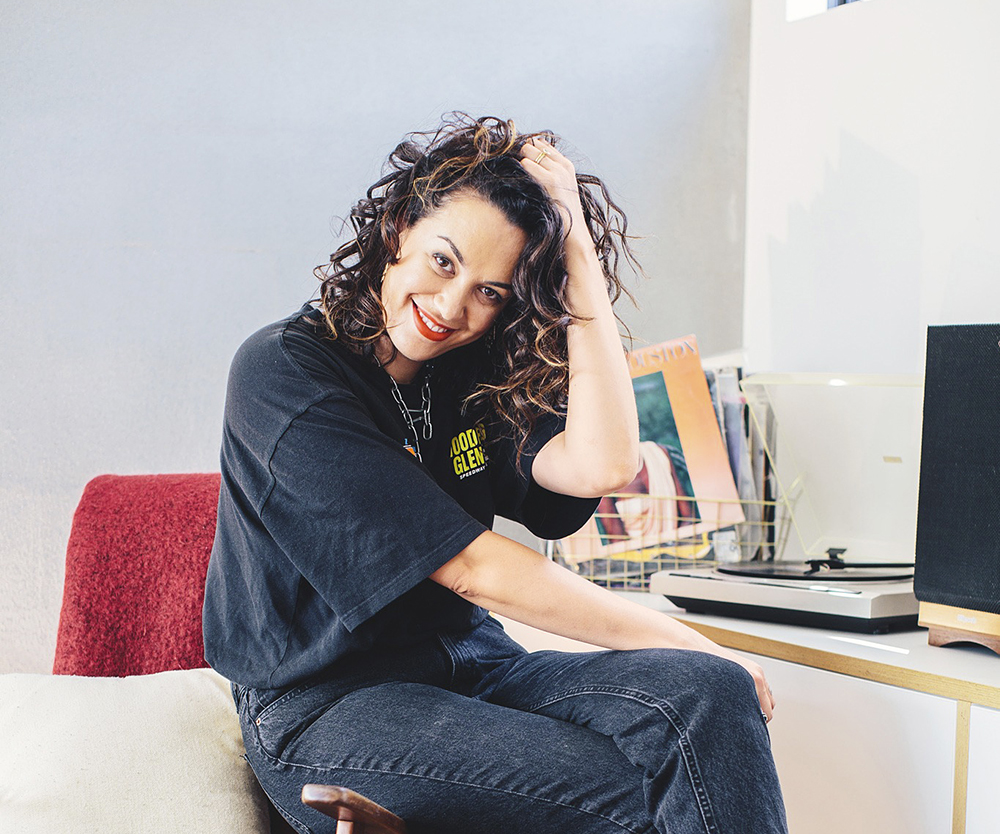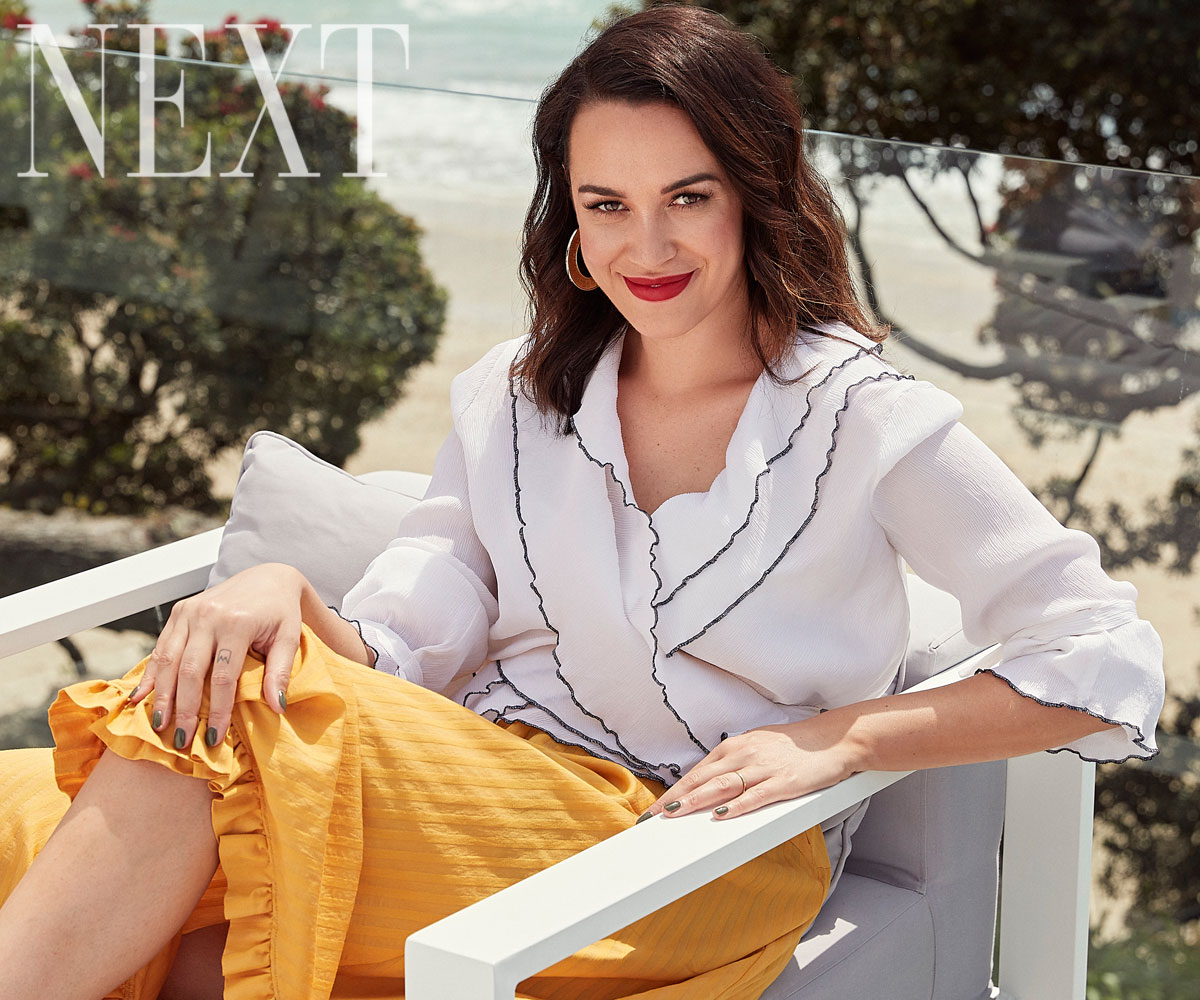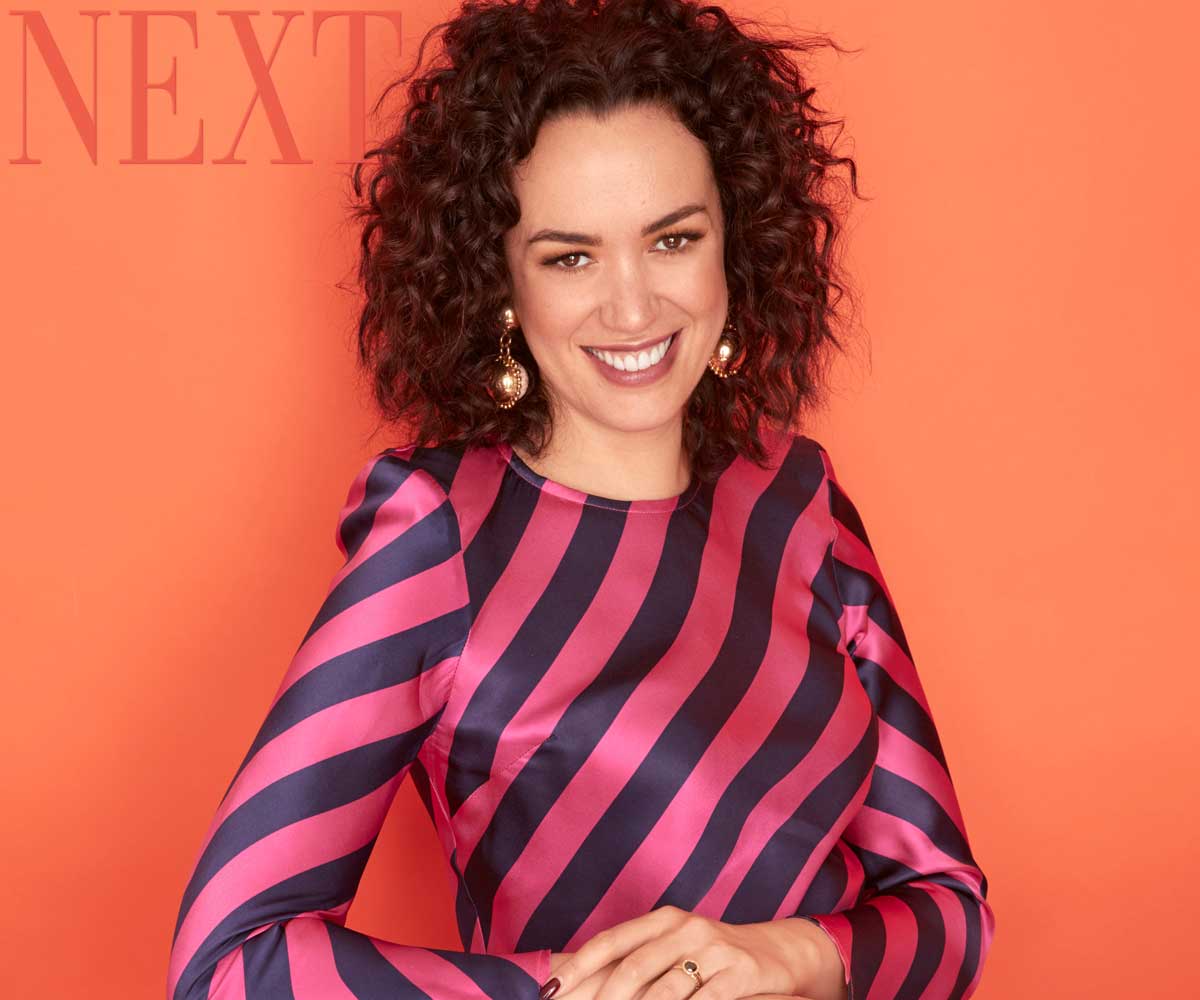The Project presenter Kanoa Lloyd, of Ngāti Porou and Ngāi Tūhoe descent, is just one voice in a gorgeous new book, Nuku: Stories of 100 Indigenous Women. Providing a snapshot of courageous wāhine, it is a social documentary allowing readers an insight to Oscar-nominated filmmakers, scientists, mothers and more.
Kanoa started her career as a children’s television presenter and is now one of very few wāhine Māori to lead primetime mainstream television in Aotearoa.
“In my teens, my drama teacher told me about a job audition for a kids’ TV show made in Dunedin. It’s not around any more, but it was quite bomb at the time. It was called Squirt and had a CGI penguin and fish. I got a job as the movie reviewer on the show, which meant once a week I got to watch movie trailers and tell people how the movie was going to be so interesting – ‘You’re gonna love it! You
should definitely watch it!’ I never got to see the actual movies.
“I fell in love with all of the parts of what it takes to make a TV show. There were writers, directors and producers, and they were all really cool, interesting people. They were ‘grown-ups’. At that age, I was just hungry for cool adults to be around. I remember telling my friends about having to catch a plane for work to do a big trip to Hamilton for the hot-air balloon festival. I was 16. It was wild.

‘I’ve decided to just stay in the moment and appreciate it. Look at what I have now’
“I reckon children’s television is like a kind of university, because you have to learn to do everything. I moved on to Sticky TV in Auckland and by the time I left that show, 10 years ago now, when I was about 23, I had directed, written episodes, done set dressing. We were all carrying cables. In a small team, you get a good understanding of what every single person is trying to achieve.
“When I ‘grew up’, I wanted to be like Mike McRoberts. I had done commercial radio and a job came up for a weekend weather presenter. It was hard. If kids’ TV was the university for my job, then I think news was like when you move out of home and go into the real world. I didn’t feel like I belonged there in any way, shape or form. Looking back, I was the only Māori woman in that room. The guy who hired me was honest about the fact they had a real lack of diversity. It played a huge part in my feeling of discomfort.
“Being a wāhine Māori on television comes with a sense of responsibility to our people. You have to figure out how to protect yourself and create boundaries so that you stay strong enough to do the important work. I recently did a story for The Project that involved tracing my whakapapa, starting a new journey of connection to my whānau, marae and reo. Through that process, I met an amazing group of women and we’ve created a WhatsApp group. We hype each other up, encourage each other, share what’s going on. It makes you feel less alone.
“Some of them supported me through a TV programme I did in 2019 about whānau moving from the big cities to smaller towns. It was a bilingual programme and they helped me through all my whakamā in speaking te reo at that level. It was a real confidence booster.
“Sometimes, I get really bad anxiety and I’ve worked out that a lot of it is because I am constantly thinking, ‘Where to next?’ In conversations with my husband and whānau, I’ve decided to just stay in the moment and appreciate it. Look at what I have now, enjoy it for what it is, because change is inevitable.”


